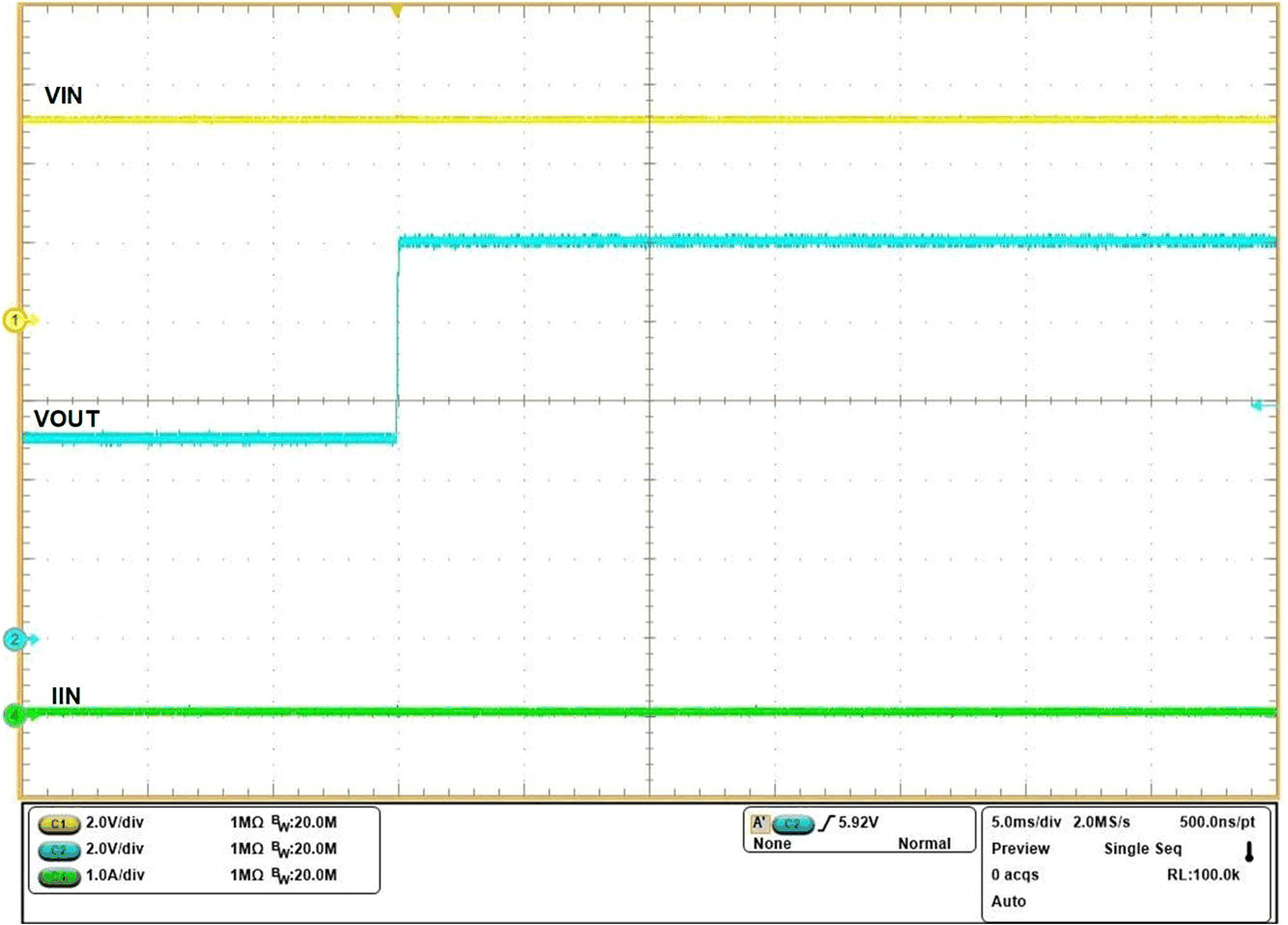SLVUC34 March 2021 TPS2521
5.6 Reverse Current Blocking Test
Use the following instructions to perform reverse current blocking test: Figure 5-9 Reverse Current Blocking Performance on
TPS25210x at VIN = 5 V, Cout = 220 μF, VOUT = 10 V Initially Disconnected and
Then Connected
Figure 5-9 Reverse Current Blocking Performance on
TPS25210x at VIN = 5 V, Cout = 220 μF, VOUT = 10 V Initially Disconnected and
Then Connected
- Set the input supply voltage VIN to 5 V and current limit of 10 A. Enable the power supply.
- Take another power supply, set the output voltage at 10 V, and apply between VOUT and PGND points of connector J2.
- Observe the input voltage, output voltage, and input current using the oscilloscope.
Figure 5-7 shows reverse current blocking performance on TPS25210EVM eFuse Evaluation Board.
 Figure 5-9 Reverse Current Blocking Performance on
TPS25210x at VIN = 5 V, Cout = 220 μF, VOUT = 10 V Initially Disconnected and
Then Connected
Figure 5-9 Reverse Current Blocking Performance on
TPS25210x at VIN = 5 V, Cout = 220 μF, VOUT = 10 V Initially Disconnected and
Then Connected